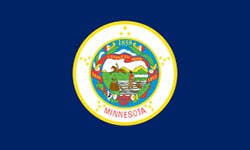Did you know that, according to the Centers for Medicare & Medicaid Services (CMS), over 77% of Medicare beneficiaries in Minnesota also have prescription drug coverage through Medicare Part D? If you’re not one of them, you probably should be. Keep reading to learn everything you need to know about Medicare Part D in Minnesota and why you should sign up.
How Do You Get Medicare Part D in Minnesota?
The Medicare program is broken into "parts." Original Medicare includes Part A, hospital insurance, and Part B, medical insurance. It does not cover prescription drug coverage. For that, you need a Medicare Part D plan.
Medicare Part C is more commonly known as Medicare Advantage. When you sign up for an MA plan, you get the same coverage you have under Original Medicare. However, most MA plans (over 90 percent) provide additional benefits. These vary by plan, but common add-ons are:
- Prescription drug coverage (known as an MA-PD plan)
- Routine vision services
- Routine dental care
- Hearing aids
- Fitness programs
In Minnesota, you can sign up for prescription drug coverage one of two ways: through a standalone Medicare Part D plan or a Medicare Advantage Prescription Drug plan.
Both types of plans are offered by Medicare-certified private insurance companies that contract with Medicare. Premiums, copayments, deductibles, and coinsurance expenses will vary from plan to plan. If you opt for Medicare Advantage, you will still pay the Medicare Part B premium.
Why you need Medicare Part D in Minnesota
Even if you're 65 and don't have insurance, nobody can force you to sign up for any part of Medicare. To encourage people to enroll, Medicare charges late penalties. If you have creditable coverage elsewhere, you'll avoid these late fees. But if you have no coverage, or if your coverage isn't as good as Medicare (i.e.creditable), you face lifelong late enrollment fees.
When can you sign up for Medicare Part D in Minnesota?
You have multiple opportunities to sign up for a prescription drug plan in Minnesota.
Your first chance to enroll in Part D is during the Initial Enrollment Period (IEP). This occurs when you first qualify for Medicare and lasts for 7 full months. If you qualify based on age, your IEP begins 3 months before your 65th birthday and ends 3 months after your birth month. If you are not receiving Social Security benefits at least 4 months before you turn 65, you must choose to enroll in Medicare (including Parts A, B, and D).
Those who qualify for Medicare due to a disability are automatically enrolled in Parts A and B starting with their 25th month of Social Security disability benefits. In this case, your IEP begins with month 22 and ends after month 28.
- If you want the benefits of a Medicare Advantage Prescription Drug plan, you will need both Medicare Parts A and B
- If you stay with Original Medicare or choose an MA plan that does not cover prescriptions, you will need to choose a standalone Part D medication plan
- No matter which plan you choose, you must live in the service area for the plan you choose
Additional Medicare enrollment periods include:
- Part B General Enrollment runs from January 1 through March 31. If you enroll in Part B during this time, you can sign up for a Medicare Part D plan from April 1 through June 30.
- The Medicare Annual Enrollment Period (AEP) is available to anyone who is currently enrolled in Medicare. It starts on October 15 and ends on December 7.
- The Medicare Advantage Open Enrollment Period (OEP) also runs from January 1 through March 31, but it is only available to people who are currently enrolled in an Advantage plan. Changes you can make during OEP are limited to switching to a new MA plan or returning to Original Medicare. However, if the changes you make result in you losing your prescription drug coverage, you may also sign up for a Medicare Part D plan.
- Special Enrollment Periods (SEPs) are available to Medicare beneficiaries who experience certain life changes, such as moving or losing their coverage. Refer to this list on Medicare.gov to see whether you qualify for an SEP.
What to look for in a Medicare Part D plan in Minnesota
Costs and coverage for Medicare Part D plans in Minnesota vary according to the plan and provider you choose. To ensure you get the best plan for your unique needs and budget, consider the following:
- Drug formulary: This is the list of medications the plan covers. Drug are also placed on tiers, which indicate what you'll pay out-of-pocket for the medication. The lower the tier, the lower your cost.
- Costs: Look beyond the monthly premium to see the full cost of the plan. Out-of-pocket Part D costs include the monthly premium, yearly deductible, and your copays. You can get a better idea of what your copays will be by reviewing the drug tiers as mentioned above.
- Pharmacy network: Most Part D plans have preferred pharmacies with which the insurance company has negotiated lower prices. Your out-of-pocket will always be lower if you use one of these pharmacies.
If your income is limited, you may qualify for Extra Help in Minnesota. This a Medicare program helps pay a variety of prescription costs. Click here to see if you qualify for Extra Help.
